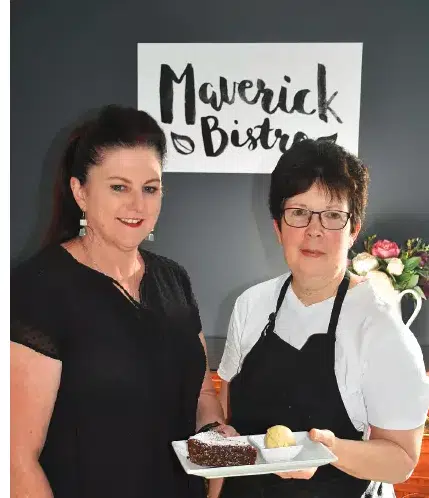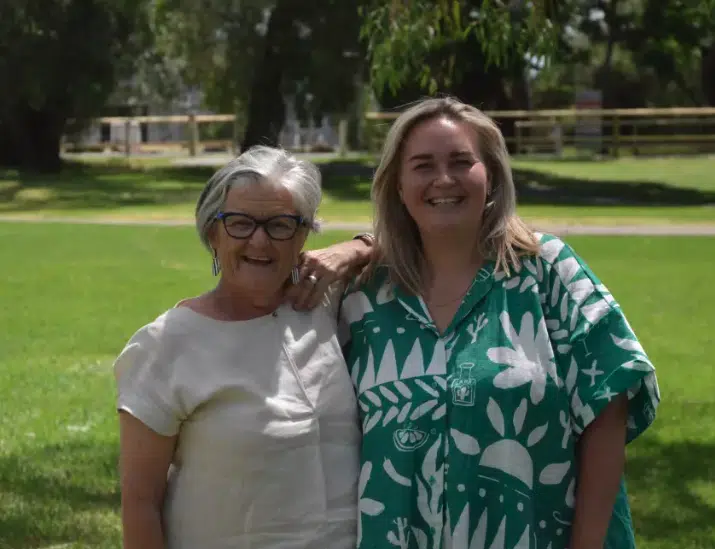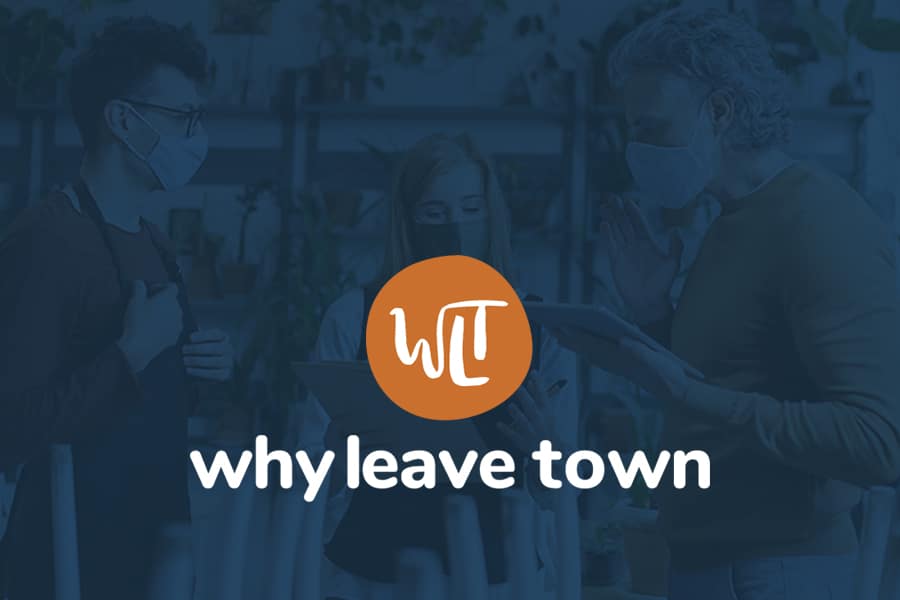It’s no secret the last decade has been a rollercoaster ride for small business owners and our communities—especially in regional Australia. Before the COVID-19 pandemic there were prolonged droughts and fires. Once lockdowns eased, there were floods and mouse plagues.
In March 2024, Australian leaders expressed concern for the year ahead, with economic uncertainty, inflation and weakening demand – due to rising interest rates – at the forefront. Despite this, the Australian Bureau of Statistics revealed that household spending increased 3% through the year on a current price, calendar-adjusted basis. It surprises many to discover Australia’s business sector is dominated by small and medium enterprises. Over 97% of all business in Australia are small businesses (0-19 employees).
But after the wild ride of the previous years, how are they faring in 2024? Is there still a focus on communities to ‘go local first?’ Why Leave Town director Ashley Watt thinks that particular conversation is as pertinent and relevant now as ever.
‘I think it’s the same now as it was post-COVID, post drought,’ Ash says. ‘The ‘shop local’ conversation is pretty loud again. We’ve been in this space since 2010, and back then it was a ‘nice to have’, rather than something that’s integral.’
‘Everything is a bit ‘quiet’ … most businesses are looking for ways to generate interest, not necessarily in a shop local context, but just in any way possible. The Christmas we just had (2023) was down. A year earlier, it was a booming Christmas. There was a lot of money floating around. I think cost of living pressures increasing, a kind of stabilisation after the pandemic, plus rising interest rates … there was a sense it was always going to happen. It still hurts, because there are so many businesses out there who need that flow of things.’

Ash Watt, founder and director of Why Leave Town.
Jodi Hayne and Tanya Pearson are the owners of Maverick Bistro, an independent restaurant in Gunnedah, NSW — a bit of an anomaly for the town, as it’s neither an established Asian restaurant, nor is it part of a bigger hotel group. And it offers table service.
‘People are more careful with their spending,’ says Tanya. ‘Locals still love the ‘locals night’ we have, but we’ve noticed people are more selective with what they order, often opting for cheaper menu items. Young professionals aren’t travelling as often and the bigger companies have let go of the plush expense accounts.’
Does a small regional restaurant – located on Gunnedah’s main street – mostly cater to locals or tourists? ‘I don’t think we can’t rely only on locals, nor we can we rely on the travelling public alone,’ says Jodi. ‘Combined, we’re quite healthy. We’re careful not to offend either group, or focus our marketing to one demographic only.’

Jodi Hayne (left) & Tanya Pearson from Maverick Bistro, Gunnedah.
Enticing customers through the door is a challenge in itself, but what about the rising costs of running a business? Tanya says that the costs of operating a restaurant have increased significantly in the past year.
‘It’s a tricky balance,’ she says. ‘You can’t throw your prices up too much or you won’t have business. But you’ve also got to consider that you are, at the end of the day, running a business, and in order to survive you need to be viable.’
‘When we first opened, seven or so years ago, I could buy scotch fillet steak for a really good wholesale price. Now it’s more than doubled. Interestingly though menu prices aren’t doubling. They have to increase, but small businesses are definitely bearing the brunt of price rises.’
Jodi believes that while some aspects of running a business remain the same, other elements are getting harder.
‘Industry is moving ahead, which is good, but running a business is hard and some of the bigger businesses we rely on for services have changed the way they do business recently,’ she says.
‘With things like software, you might have to call or wait in a queue online, rather than see someone locally. You have to be patient. It can be quite challenging when you’re time poor yourself. We always prefer to work with another local business if we can. It makes life easier.’
Ash Watt agrees that many local businesses, and customers, are remembering the value of our smaller retailers.
‘This flows into all of the media attention recently with Coles and Woolworths,’ Ash says. ‘The whole ‘use it or lose it’ argument is back in a big way. Sometimes customers think they’re paying higher prices at the local business, but they’ve realised lately that’s not always the case.’ ‘I’d say it’s important for people to at least consider local / small businesses. You might discover the business stocks most of what you’re looking for. They can source things for you. Often, they’re more flexible with pricing and delivery than you think. While it might not always be viable, it’s at least worth the conversation,’ Ash says.
Emma Gaffney, from the Forbes Business Chamber, believes the ‘shop local’ conversation is as strong and important now as ever.
‘I think Forbes is going from strength-to-strength. It’s great to be part of such a resilient community. After everything we’ve been through (COVID-19 and the floods of 2022) we’re bouncing back.’
‘We have so many great local businesses here. Many are long-term businesses, and new shops are joining the community. It’s great to see young people taking on an established business, creating their own vision and moving forward.’
Emma, who took over marketing and admin for the Forbes Business Chamber from Fiona Ferguson earlier this year, thinks the Why Leave Town community gift card is ‘one of the best initiatives I’ve ever heard of.’
‘The fact it keeps money on cards that can only be spent with local retailers is such a big win. I remember years ago, the Christmas draw was a cash prize. When it’s a local gift card it means the money has to be spent locally and keeps the money in our community. The flow-on effect is massive,’ she says.

Fiona Ferguson (left) & Emma Gaffney. Picture by Madeline Blackstock, from Forbes Advocate.
Emma isn’t the only one in Forbes excited about keeping money within the local economy. Since the gift card was launched, Forbes Business Chamber has helped keep almost $1.2 million dollars within the community, with huge support from the community, who have helped distribute more than 11,000 gift cards.
Not keen to rest on their laurels, Emma is keen for the Forbes Business Chamber to continue growing and to run at some of the current challenges head-on.
‘I think we could do more to advertise the card, do more training with businesses so they really understand the impact,’ she says. ‘We’re excited to add a digital gift card to the mix. We’re having a meeting with our members to get the ball rolling.’
Why Leave Town have recently added a local digital gift card to their offering. It’s no secret the way people are paying for goods and services is pivoting to phones and digital technology, and Why Leave Town is keen to embrace the trend.
‘The early signs say there’s a lot of interest,’ Ash says. ‘There have been plenty of opportunities we’ve missed in the past because of timing. The physical gift card takes time to print and distribute and unfortunately some opportunities haven’t eventuated because of this. With digital, we can promote local businesses straight away. Have digital gift cards in Apple wallets instantly. There’re plenty of new opportunities with the technology, and I can’t wait to see them come to life.’ But with great technology comes even greater investment.
‘There’s a big reason we don’t have much competition in the community gift card space,’ Ash says. ‘It’s costly to do what we do. The volumes other card providers (corporates) have are far greater than ours. Small businesses trying to compete with the big guys … it’s far too expensive. The technology they need to invest in is far too complex and expensive.
Why Leave Town’s platform is basic for the customer, but underneath the iceberg there’s a huge amount of work that’s gone into making it look easy. Harnessing that technology, there’s so much we can do to help small and medium sized businesses — and how that in turn helps customers shop locally. I’m really excited to see it grow and what the year ahead will bring.’
Despite the cost-of-living pressure, there’s still optimism out there.
‘I think people visiting Gunnedah are surprised by how vibrant our community is,’ Jodi says. ‘I think that overall business confidence is still quite high, but at times it can feel very quiet. Then on a Friday, busloads of people have pulled up and are roaming the streets and shopping. You never quite know what you’re going to get.’
Ash agrees, commenting that even though things have slowed, there’s been an increased interest in local gift card programs from councils and business chambers.
‘More in the last month than in previous years. Possibly on the back of people having a tougher time. I think they’ve realised now is the time to do something about it. To do anything to help keep money in our regional communities is a step in the right direction.’

